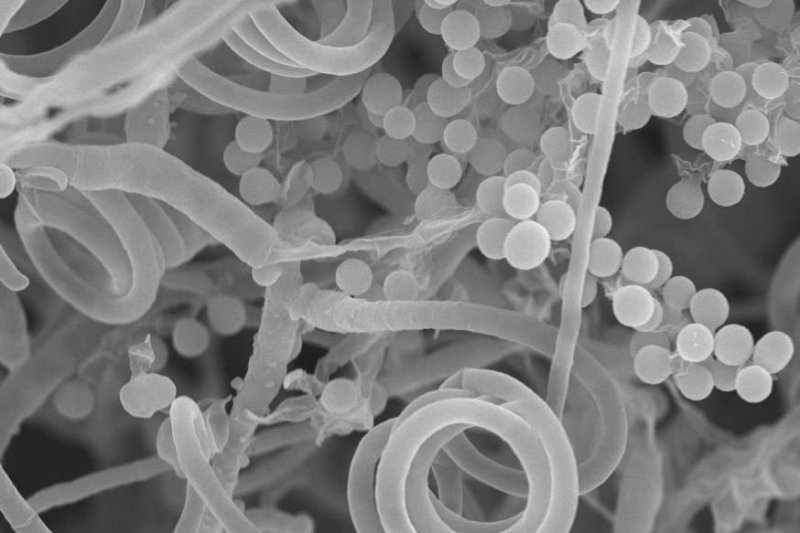An image captured with a microscope showcases the fungal species responsible for athlete's foot and most toenail fungal infections. Photo by Duke/NC State
Feb. 22 (UPI) -- The fungus responsible for tinea pedis, more commonly known as athlete's foot, has given up sex, new research suggests.
When scientists at Duke University analyzed dozens of samples of Trichophyton rubrum, the fungus responsible for a variety of toenail and skin infections, they found they were all from the same mating type. The homogeneity suggests the species has adopted a sexless existence.
When researchers tried to set up the fungus samples with those of a different mating type, the fungi refused to get it on. The findings, published this week in the journal Genetics, suggests the fungus species is now asexual.
When species adopt asexuality, their genetic diversity tends to decline, diminishing its chances of survival. In other words, Trichophyton rubrum's days are numbered. Still, it will be some time before athlete's foot is no more.
"It is commonly thought that if an organism becomes asexual, it is doomed to extinction," Duke microbiologist Joseph Heitman said in a news release. "While that may be true, the time frame we are talking about here is probably hundreds of thousands to millions of years."
After five months in the Petri dishes yielded little evidence of fungal sex, the researchers sequenced the genome of the species' two mating types. The two genome types proved 99.97 percent identical, suggesting the species is extremely clonal.
"Such incredibly high clonality across isolates from around the world is remarkable, and suggests that this organism is very well adapted to humans," said Christina Cuomo.
While fungal infections aren't going away anytime soon, their asexuality could make them newly vulnerable to certain therapies, and their lack of genetic diversity suggests their days of adaptability are over.
Previous studies have suggested Trichophyton rubrum is drug resistant, which explains why many over-the-counter treatments can minimize colonization, but usually fail to totally cure the infection.
However, if new drugs can be developed, it's unlikely Trichophyton rubrum has the genetic firepower to develope defenses against them.















